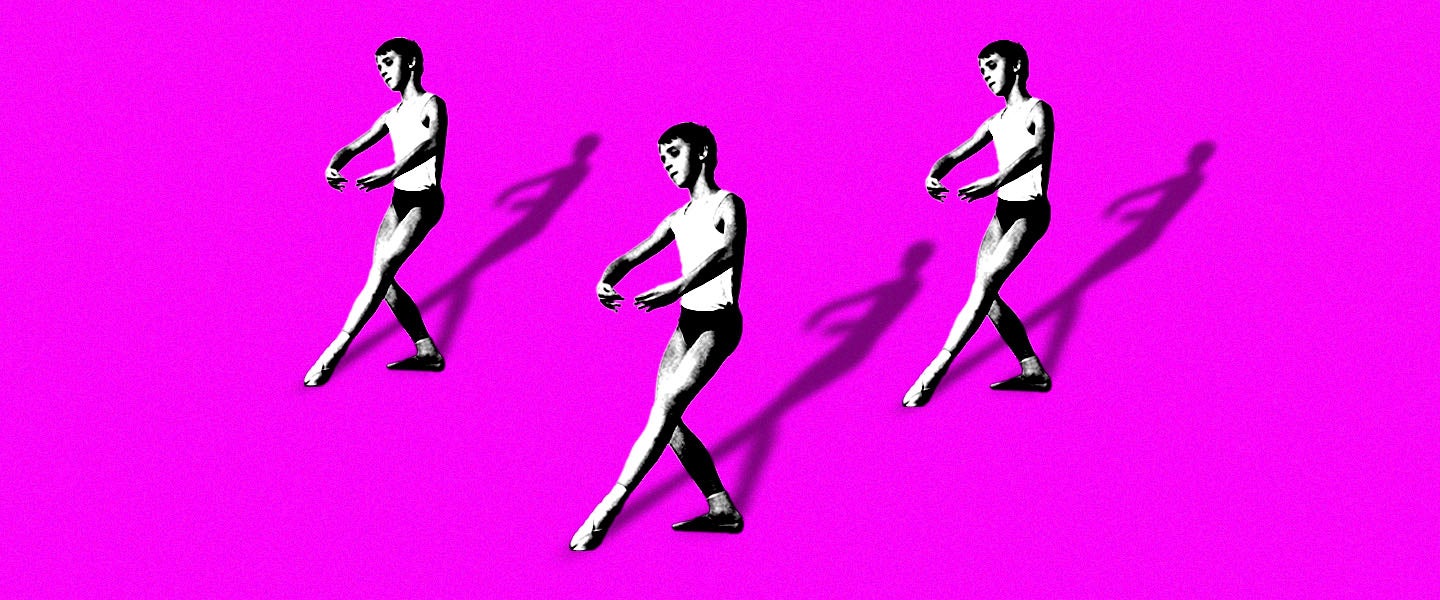In August, Good Morning America host Lara Spencer mocked 6-year-old Prince George for taking ballet lessons. “We’ll see how long that lasts,” she joked. After a public outcry, Spencer swiftly apologized. She called her comment “insensitive” and “stupid,” spoke on-air about the “bravery that it takes for a young boy to pursue a career in dance” and invited famous male dancers to talk about how they, too, were belittled for their passion.
Spencer’s apology seems sincere, and I give the host credit for correcting herself. It’s the trauma porn that rubs me the wrong way.
In pop culture, from Billy Elliot to Boy Erased, we see the same repeated narrative: A man who deviates from traditional masculinity is oppressed and beaten down… until, ultimately, he triumphs. Growing up in the era of Glee and High School Musical, I watched men exemplify how exhilarating and cool dancing is. But in both these shows, men discovered dance solely to push past anguish and abuse — as if proving your adversaries wrong were the only reason to get up and move.
To be sure, it’s important to shine a light on discrimination and cultural biases. We still need to correct the fundamental falsehood that, as Kevin Fallon writes for the Daily Beast, “ballet is for sissies” and male dancing is “flouncy, fey and weak.”
But I think society is ready for the next step. Why couldn’t we hear from the famous dancers on GMA about why they love their work in the first place?
After all, some of the coolest guys in existence are dancers. These A-list stars speak about their dance skills and training openly and honestly. Channing Tatum, Christian Bale and Tupac Shakur? They all got their start as dancers. Tom Holland, who starred in the West End production of Billy Elliot, recently told GQ that his childhood ballet training came in handy when playing the masked Spider-Man, using his body “to emote in different ways that aren’t crying or laughing.”
I reached out to several young male dancers to hear more about the freedom and happiness dance gives them. Shifting our cultural biases, I believe, starts with looking beyond the plight of dancers and highlighting the sheer joy of their art. Removing the stigma is only half the battle.

‘An Art Form and a Language’
For Hayden Kiely, 17, dancing was “the missing key” in his life. “All of a sudden, I discovered this art form where I didn’t matter if you were good. I could express, well, me,” he says.
Two years ago, Kiely enrolled in his first dance class, studying jazz to give his musical theater performances a boost. But a year later, with some praise from his instructor, Kiely walked away from musical theater and made contemporary dancing his full-time passion — even if he was bullied for it. “It doesn’t matter how many times I got sworn out at school,” he says. “I knew that afterward I got to go do something that I truly not only loved but wanted to push myself in.”
In June, Kiely received the Outstanding Dancer Scholarship at the NYC Dance Alliance’s National Gala. Attending the event in New York was the first time he met a group of male dancers — 50 men, to be exact. “I live hundreds of miles from most of these boys, and we share an unspoken connection through dance,” Kiely raves. “For me, that’s honestly magical.”
Now back in Montana and finishing up high school, Kiely has fully given himself over to contemporary dance. He’s not afraid of excelling in his craft, nor will he let Lara Spencer or anyone else minimize him. “Dance is so much more than what’s seen on stage. It’s an art form and a language that leaves nobody’s ideas behind,” he says. “It’s something human that nobody should be ashamed of being passionate about.”
‘A Physically Great Feeling’
After watching Spencer mock Prince George, Andrew Bennett, a Canadian dancer who goes by the alias Factor Eight, posted a personal essay on Medium and Reddit about growing up as a male dancer. “I didn’t know how passionate I was about being true to yourself, your values and what you believe in,” he tells MEL.
Over 300 dancers show up to ‘Good Morning America’ studio in Times Square in support of male dancers after host mocked Prince George’s ballet classes from entertainment
Why dance? “It requires creativity as well as kinesthetic intelligence,” he says. Though primarily a street dancer, Bennett has trained in all principles, including ballet. He’s learned to control and move his body, aware of both its limitations and elasticity.
‘Express Yourself Fully’
Mike Herring, a 35-year-old dancer from Boston, tells me, “Being able to master your balance, your movement and control over your entire body and using that to express yourself is a physically great feeling.” Herring has danced for 25 years. He’s no longer a competitive dancer; today, he works full-time as a software developer. However, most of his free time is devoted to dancing in troupes like the Boston Lindy Hop and the Dramatics. “It’s a part of my life. It’s not something I’m ever going to stop,” he says.
Growing up, Herring was one of two boys in a 500-person dance academy. The scarcity of boys certainly had its perks. Every year, he received the Russian number in the company’s production of The Nutcracker. He also received a feature performance at their annual recital in his senior year of high school. “That propelled me to get involved in more teaching and choreography,” he says. “I was always really proud of what I was doing with dance and always wanted to do more.”
Now, as a swing dance instructor, Herring helps his students embrace personal enrichment at the core of dance. Like the dancers who appeared alongside Spencer on GMA, Herring didn’t spend 25 years dancing to get back at his bullies. He proved them wrong years ago. What brings him back to the dance studio is the satisfaction of having mastered a difficult set or skill.
That’s the message of self-love — dancing for himself — that he wants the next generation of dancers to know. “I really try to encourage them to come out of their shells. How can you express yourself more fully through the use of your body and energy?”

